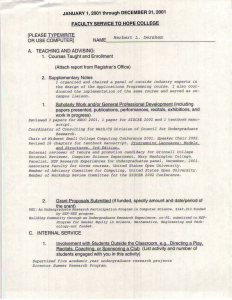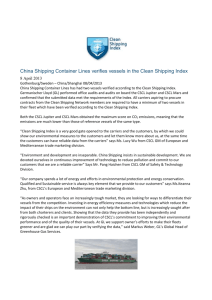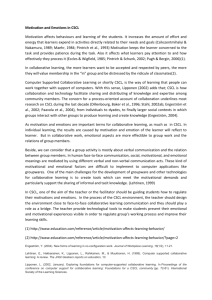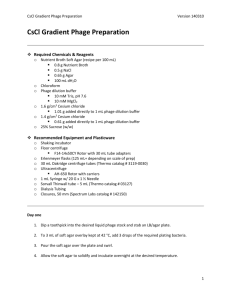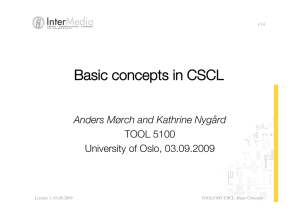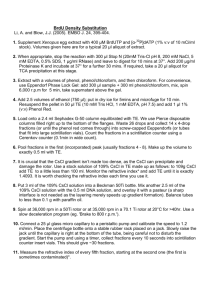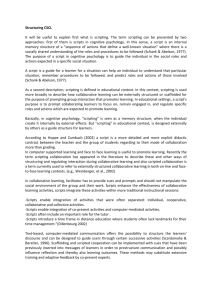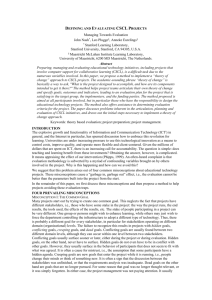Cesium Chloride Prep of Phage Community DNA
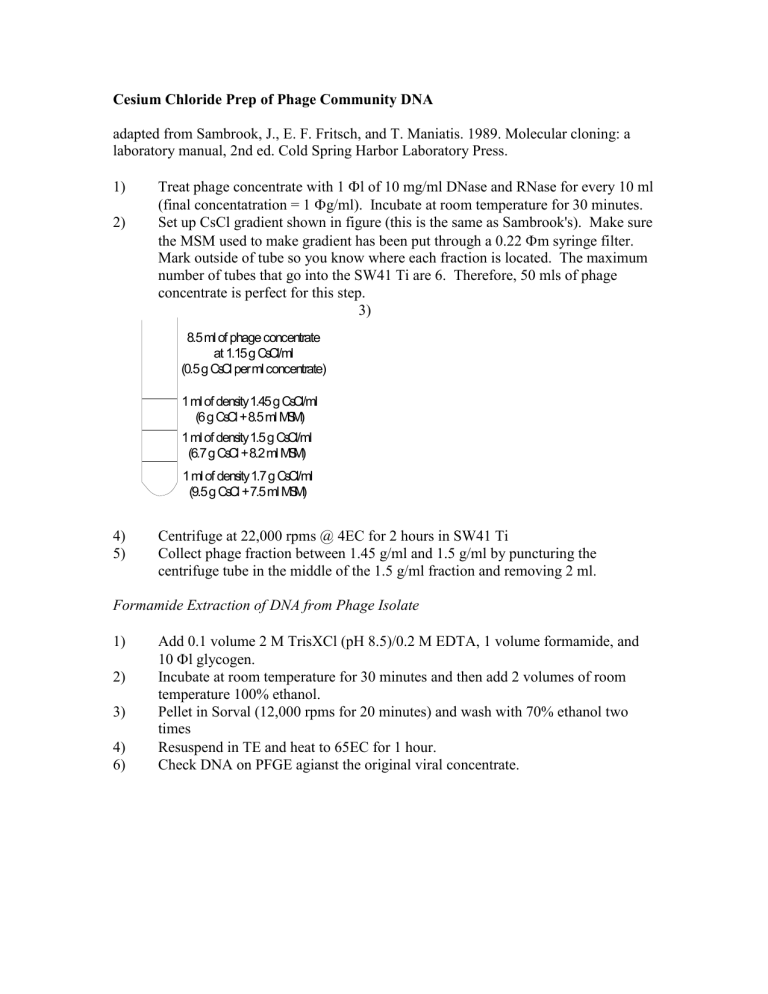
Cesium Chloride Prep of Phage Community DNA adapted from Sambrook, J., E. F. Fritsch, and T. Maniatis. 1989. Molecular cloning: a laboratory manual, 2nd ed. Cold Spring Harbor Laboratory Press.
1) Treat phage concentrate with 1
l of 10 mg/ml DNase and RNase for every 10 ml
(final concentatration = 1
g/ml). Incubate at room temperature for 30 minutes.
2) Set up CsCl gradient shown in figure (this is the same as Sambrook's). Make sure the MSM used to make gradient has been put through a 0.22
m syringe filter.
Mark outside of tube so you know where each fraction is located. The maximum number of tubes that go into the SW41 Ti are 6. Therefore, 50 mls of phage concentrate is perfect for this step.
3)
8.5 ml of phage concentrate at 1.15 g CsCl/ml
(0.5 g CsCl per ml concentrate)
1 ml of density 1.45 g CsCl/ml
(6 g CsCl +8.5 ml MSM)
1 ml of density 1.5 g CsCl/ml
(6.7 g CsCl +8.2 ml MSM)
1 ml of density 1.7 g CsCl/ml
(9.5 g CsCl +7.5 ml MSM)
4) Centrifuge at 22,000 rpms @ 4
C for 2 hours in SW41 Ti
5) Collect phage fraction between 1.45 g/ml and 1.5 g/ml by puncturing the centrifuge tube in the middle of the 1.5 g/ml fraction and removing 2 ml.
Formamide Extraction of DNA from Phage Isolate
1) Add 0.1 volume 2 M Tris
Cl (pH 8.5)/0.2 M EDTA, 1 volume formamide, and
10
l glycogen.
2) Incubate at room temperature for 30 minutes and then add 2 volumes of room temperature 100% ethanol.
3) Pellet in Sorval (12,000 rpms for 20 minutes) and wash with 70% ethanol two times
4) Resuspend in TE and heat to 65
C for 1 hour.
6) Check DNA on PFGE agianst the original viral concentrate.


